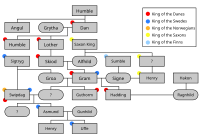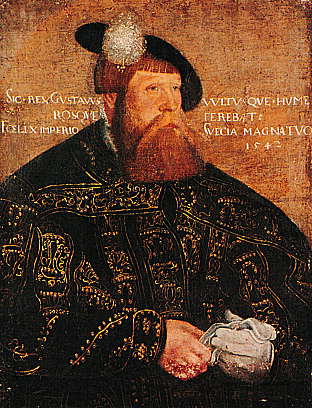
Gustav I, commonly known as Gustav Vasa, was King of Sweden from 1523 until his death in 1560, previously self-recognised Protector of the Realm (Riksföreståndare) from 1521, during the ongoing Swedish War of Liberation against King Christian II of Denmark, Norway and Sweden. Gustav rose to lead the Swedish War of Liberation following the Stockholm Bloodbath, where his father was executed. Gustav's election as king on 6 June 1523 and his triumphant entry into Stockholm eleven days later marked Sweden's final secession from the Kalmar Union.
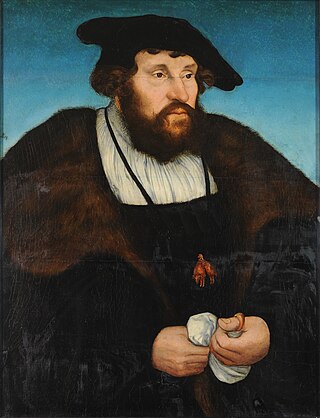
Christian II was a Scandinavian monarch under the Kalmar Union who reigned as King of Denmark and Norway, from 1513 until 1523, and Sweden from 1520 until 1521. From 1513 to 1523, he was concurrently Duke of Schleswig and Holstein in joint rule with his uncle Frederick.
"Brown Bess" is a nickname of uncertain origin for the British Army's muzzle-loading smoothbore flintlock Land Pattern Musket and its derivatives. The musket design remained in use for over a hundred years with many incremental changes in its design. These versions include the Long Land Pattern, the Short Land Pattern, the India Pattern, the New Land Pattern Musket, and the Sea Service Musket.

Johann Tserclaes, Count of Tilly was a field marshal who commanded the Catholic League's forces in the Thirty Years' War. From 1620–31, he had an unmatched and demoralizing string of important victories against the Protestants, including White Mountain, Wimpfen, Höchst, Stadtlohn and the Conquest of the Palatinate. He destroyed a Danish army at Lutter and sacked the Protestant city of Magdeburg, which caused the death of some 20,000 of the city's inhabitants, both defenders and non-combatants, out of a total population of 25,000.

Grógaldr or The Spell of Gróa is the first of two poems, now commonly published under the title Svipdagsmál found in several 17th-century paper manuscripts with Fjölsvinnsmál. In at least three of these manuscripts, the poems are in reverse order and separated by a third eddic poem titled, Hyndluljóð. For a long time, the connection between the two poems was not realized, until in 1854 Svend Grundtvig pointed out a connection between the story told in Gróagaldr and the first part of the medieval Scandinavian ballad of Ungen Sveidal/Herr Svedendal/Hertig Silfverdal. Then in 1856, Sophus Bugge noticed that the last part of the ballad corresponded to Fjölsvinnsmál. Bugge wrote about this connection in Forhandlinger i Videnskabs-Selskabet i Christiania 1860, calling the two poems together Svipdagsmál. Subsequent scholars have accepted this title.
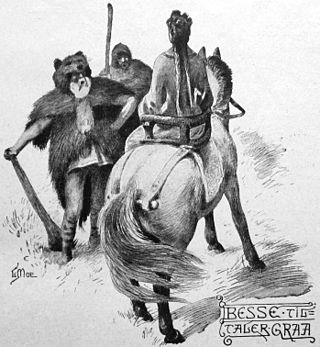
In Norse mythology, Gróa is a völva (seeress) and practitioner of seiðr. She is the wife of Aurvandil the Bold. Groa was also the goddess of knowledge.
Sverker II or Sverker the Younger was King of Sweden from 1195 or 1196 to 1208 when he was defeated in the Battle of Lena by Prince Eric. Sverker died in the 1210 Battle of Gestilren where his forces battled those of King Eric X.
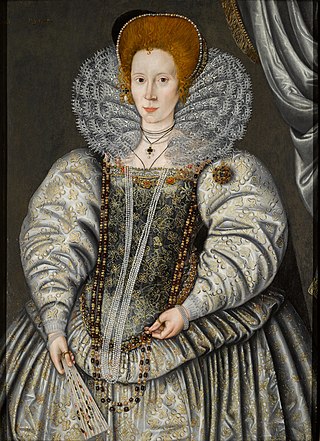
Elizabeth, Lady Raleigh, was an English courtier, a Gentlewoman of the Privy Chamber to Queen Elizabeth I of England. Her secret marriage to Sir Walter Raleigh precipitated a long period of royal disfavour for both her and her husband.

The Scanian War was a part of the Northern Wars involving the union of Denmark–Norway, Brandenburg and Sweden. It was fought from 1675 to 1679 mainly on Scanian soil, in the former Danish–Norwegian provinces along the border with Sweden, and in Northern Germany. While the latter battles are regarded as a theater of the Scanian war in English, Danish, Norwegian and Swedish historiography, they are seen as a separate war in German historiography, called the Swedish-Brandenburgian War.

Prince Charles of Hesse-Kassel was a cadet member of the house of Hesse-Kassel and a Danish general field marshal. Brought up with relatives at the Danish court, he spent most of his life in Denmark, serving as royal governor of the twin duchies of Schleswig-Holstein from 1769 to 1836 and commander-in-chief of the Norwegian army from 1772 to 1814.

Gram was one of the earliest legendary Danish kings according to Saxo Grammaticus' Gesta Danorum. His history is given in more detail than those of his predecessors. Georges Dumézil argued that Gram was partially modelled on the god Thor, in particular his defeat of Hrungnir and subsequent encounter with Gróa.
In Norse mythology, Þrúðvangr is a field where the god Thor resides. The field is attested in the Prose Edda and in Heimskringla, both written by Snorri Sturluson in the 13th century.
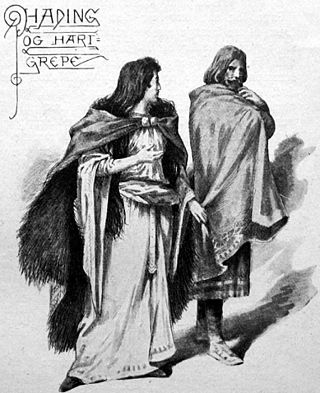
Hadingus was one of the earliest legendary Danish kings according to Saxo Grammaticus' Gesta Danorum, where he has a detailed biography. Georges Dumézil and others have argued that Hadingus was partially modelled on the god Njörðr.

Denmark–Russia relations are the relations between the countries of Denmark and Russia. The Kings of Denmark and the Russian Tsars interacted from the 15th century onwards – subsequently Denmark's control of access to and from the Baltic Sea had considerable significance for the trade and naval flexibility of the Russian Empire, while rivalries between Denmark and Sweden on the one hand and between Sweden and Russia on the other led to alliances and military support. Denmark and the USSR established diplomatic relations on 18 June 1924.

Prince Frederik of Hesse, Landgrave Friedrich of Hesse-Cassel was a Danish-German nobleman, field marshal and governor-general of Norway (1810–1813) and the same in the duchies of Schleswig and Holstein (1836–1842).
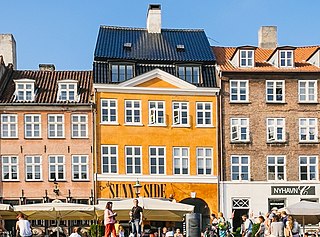
Nyhavn 31 is a listed property overlooking the Nyhavn canal in central Copenhagen, Denmark.
Guðrún Gróa Þorsteinsdóttir is an Icelandic basketball player and a former power lifter. She won the Icelandic basketball championship two times, in 2010 and 2014, and the Icelandic Basketball Cup once. She was one of the Úrvalsdeild kvenna premier defenders during her career, being named the Úrvalsdeild Defensive Player of the Year four times.

Guthorm or Guthormus was one of the earliest legendary Danish kings according to Saxo Grammaticus. He was a son Danish king, Gram and Swedish princess, Groa.

Roar or Roari was a Danish man in Gesta Danorum. He helped raise Prince Gram and trained him in swordsmanship. He later married his daughter to him. However, this marriage ended when Gram grew tired of his wife and arranged her marriage to his retainer, Bess.

Svipdagr or Swipdag was a legendary Swedish king and important figure in Book One of Gesta Danorum. The realm of his father was invaded by a Danish prince, Gram in to order marry, Svipdagr's sister, Groa. The prince was eventually successful and Svipdagr's father, Sigtryg was killed. Svipdagr escaped to Norway and carved himself a kingdom of his own. Later, Gram's act to dishonor his wife compelled Svipdagr to invade Sweden. After Gram murdered the King of the Saxons many Saxons joined Svipdagr's side. The war continued many years and during this time Gram tried to rape Svipdagr's daughter. Finally, Svipdagr was able to kill Gram in battle and took over Sweden and Denmark.

